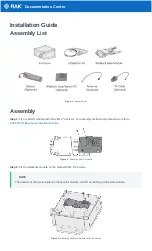
GPSMAP 396 Owner’s Manual
tIs >
tIs l
IMItAtIons
TIS Limitations
TIS is NOT intended to be used as a collision avoidance system
and does not relieve the pilot responsibility to “see and avoid”
other aircraft. TIS should not be used for avoidance maneuvers
during IMC or other times when there is no visual contact with the
intruder aircraft. TIS is intended only to assist in visual acquisition
of other aircraft in VMC. No recommended avoidance maneuvers
are provided for, nor authorized, as a direct result of a TIS display or
TIS advisory.
While TIS is a useful aid to visual traffic avoidance, it has some
system limitations that must be fully understood to ensure proper
use. Many of these limitations are inherent in secondary radar
surveillance. In other words, the information provided by TIS will
be no better than that provided to ATC. TIS only shows aircraft with
operating transponders installed.
TIS relies on surveillance of the Mode S radar, which is a
“secondary surveillance” radar similar to the ATCRBS. TIS
operation may be intermittent during turns or other maneuvering.
TIS is dependent on two-way, “line-of-sight” communications
between the aircraft and the Mode S radar.
Whenever the structure of the client aircraft comes between the
transponder antenna (usually located on the underside of the aircraft)
and the ground-based radar antenna, the signal may be temporarily
interrupted. Other limitations and anomalies associated with TIS are
described in the AIM, Section 1-3-5. Refer to
information.
notE:
Garmin is not responsible for Mode S geographical
coverage. Operation of the ground stations is the responsibility
of the FAA. Refer to the Aeronautical Information Manual for a
Terminal Mode S Radar Site Map covering the U.S.
notE:
TIS is unavailable at low altitudes in many areas of the
U.S., particularly in mountainous regions. Also, when flying near
the “floor” of radar coverage in a particular area, intruders below
the client aircraft may not be detected by TIS.












































